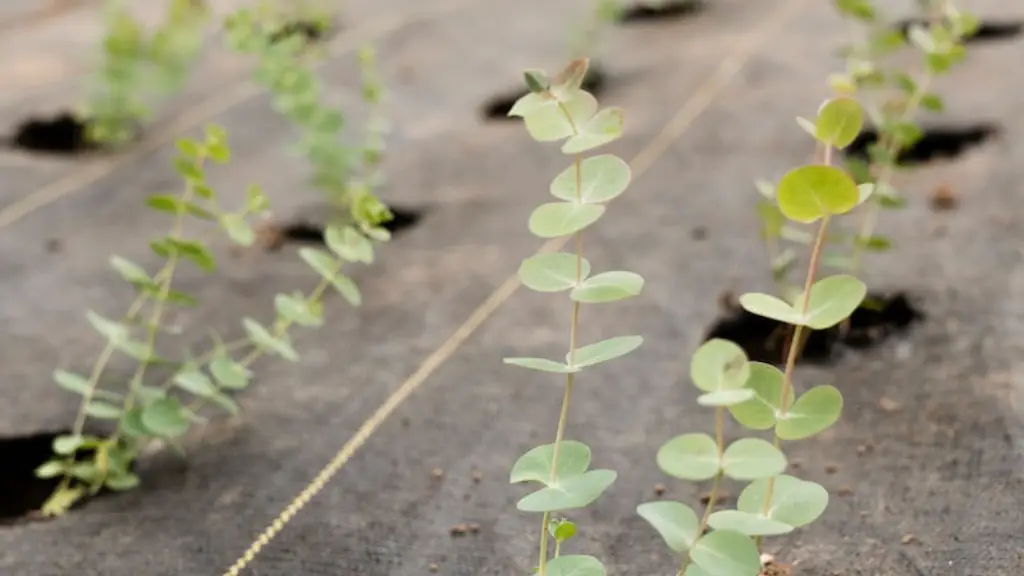Pest control is an important aspect of agriculture. There are a variety of pest control methods available to farmers, including chemical, biological, and cultural methods. Chemical pest control methods involve the use of insecticides and herbicides. Biological pest control methods include the use of predators, parasites, and pathogens. Cultural pest control methods involve the manipulation of the environment to reduce the population of pests.
There is no single answer to this question as the best method of pest control in agriculture will vary depending on the type of pests, the crops being grown, and the growing conditions. However, there are some general tips that can be followed in order to reduce the risk of pests:
-Choose pest-resistant crop varieties when possible.
-Practice crop rotation to reduce the build-up of pests in the soil.
-Remove potential shelter and food sources for pests, such as weeds and debris.
-Use traps, barriers, and other physical controls to keep pests away from crops.
-Apply insecticides and other chemicals only when necessary and according to manufacturer’s instructions.
What are the methods to control the pest?
Physical pest control is a great way to get rid of pests without using chemicals. Some common examples of physical pest control include removing or destroying nests, blocking holes, windows or doorways, temperature control methods to kill pests, or setting traps to catch pests and then remove them from the area.
Integrated pest management (IPM) is a process that uses a variety of techniques to manage pests. IPM is a sustainable approach to pest management that relies on a combination of common sense and science.
The first step in IPM is proper identification of damage and responsible “pest”. Once the pest is identified, the next step is to learn about the pest and host life cycle and biology. This information is used to monitor or sample the environment for pest population. If the pest population reaches an action threshold (economic, health or aesthetic), then a combination of management tactics are chosen. These tactics are evaluated for effectiveness and the process is repeated as necessary.
What are 4 biological methods of controlling pests
Natural enemies of insect pests are organisms that feed on or parasitize the pests, and thus help to control them. Predators include animals such as ladybugs, lacewings, and parasitic wasps, which feed on the pests. Parasitoids are insects that parasitize the pests, ultimately killing them. Pathogens are disease-causing organisms such as bacteria, viruses, and fungi, which can infect and kill the pests. Competitors are other organisms that compete with the pests for food, space, or other resources.
Organic pest management is a great way to keep your home or garden free of pests without resorting to harsh chemicals. There are a variety of organic pest management techniques that can be used, including pheromone traps, release of beneficial insects, use of trap crops, and more. Be sure to check the rules and regulations regarding organic pest management in your area before getting started.
What are the 3 basic ways to control pests?
Hygiene pest control is the number one way to get rid of pests. This method involves keeping your surroundings clean and free of debris. Biological pest control uses the natural predators of pests to get rid of them. Mechanical pest control uses traps and barriers to keep pests away.
Cultural controls are one of the most common and effective ways to control pests and diseases in the garden. This involves using practices such as crop rotation, mulching, and companion planting to create an unfavorable environment for pests and diseases. Crop rotation is a great way to control pests and diseases because it breaks the life cycle of many pests and diseases. Mulching also helps to control pests and diseases by creating a barrier between the soil and the plant. Companion planting is another great way to control pests and diseases because it can help to repel pests and diseases or attract beneficial insects that will help to control the pests and diseases.
What is the most popular pest control method?
Chemical control is the most common method of pest control, and it involves the use of pesticides. Pesticides are chemicals that either kill pests or inhibit their development. Pesticides are often classified according to the pest they are intended to control.
Pest infestation is something that no one wants. In order to prevent pests from entering your home, it is important to seal and secure all entry points. This includes cracks in the foundation, gaps around windows and doors, and any other openings. Additionally, keeping your home clean and free of clutter will help deter pests. Be sure to vacuum regularly and keep food stored in airtight containers. If you suspect a pest problem, be sure to carry out regular inspections and call a professional if necessary.
What are the 3 ways you can control pest without harming the environment
There are many ways to control pests without harming the environment. Here are four eco-friendly methods:
1. Plant mint, basil, lavender, rosemary and other herbs in your garden. These herbs work well as a natural pest control.
2. Season your window sills with vinegar and essential oils. This will help to keep pests away.
3. Use food waste to turn pests away. For example, you can place kitchen scraps in an outdoor compost bin to keep pests away from your home.
4. traps are also an effective way to control pests without harming the environment. For example, you can use a mouse trap to catch mice without harming them.
Predators are organisms that feed on other organisms. Parasitoids are organisms that live on or in other organisms and feed on them. Pathogens are organisms that cause disease.
What is the best way of eradicating pests in farms?
Plowing, crop rotation, removal of infected plant material, cleaning of greenhouse and tillage equipment, and effective manure management are all cultural practices that are employed to deprive pests of a comfortable habitat or prevent their spread. These cultural practices are important for the success of any farm or agricultural operation.
There are many easy ways to get rid of common household bugs. Some of these include using peppermint oil, diatomaceous earth, neem oil, flypaper, and insect traps. Peppermint oil can help to repel ants, spiders, mosquitoes, and even mice. Diatomaceous earth can be used to kill many different types of insects. Neem oil is also a natural insecticide that can be used to kill many different types of insects. flypaper and insect traps can also be used to capture and kill many different types of insects.
What do farmers use to keep bugs off plants
Food grade diatomaceous earth can be used as a natural, abrasive barrier to crawling insects like stinkbugs. Simply sprinkle it beneath growing watermelon, cantaloupe, squash, and all fruits and vegetables that are resting on the ground, as well as on plant leaves.
1. Use Sticky Traps: Sticky traps keep flies, earwigs, and other small insects away from your plants.
2. Use a Soil Barrier: Many bugs that invade plants would rather enjoy the soil than the leaves.
3. Bug Sprays: Essential oils can be used as effective bug sprays.
4. Choose the Right Plants: Some plants are more resistant to pests than others.
5. Clean the Leaves: Frogs and ladybugs are natural predators of many plant pests.
6. Use Companion Plants: Certain plants can act as a natural repellent for common pests.
7. Practice Preventive Maintenance: Keeping your garden clean and tidy can help prevent pests from taking hold in the first place.
What are the 6 general pest management methods?
Most specific insect control methods fall into one of the following six categories: cultural control, host resistance, physical control, mechanical control, biological control, and chemical control.
Cultural control refers to methods of pest control that seek to alter the environment to make it less conducive to pests. This can include things like altering crop rotation schedules, increasing hygiene and sanitation, and removing potential breeding sites.
Host resistance refers to using plants that are naturally resistant to pests, or breeding plants to be more resistant. This is often done with crops, but can also be done with other plants around the home.
Physical control methods seek to remove pests or keep them from getting to their target. This can be done through things like fencing, screens, and traps.
Mechanical control methods involve using machines or other physical devices to remove or kill pests. This can include things like vacuuming, using a brush to remove pests from surfaces, or using a power washer to remove them from buildings.
Biological control methods use living organisms to control pests. This can include using predators to eat pests, using parasites to kill them, or using bacteria or viruses to infect and kill them.
Chemical control methods involve using chemicals to kill or
Pesticides are designed to kill pests, but they can also be harmful to humans and the environment. Biological pest control is a method of controlling pests using other organisms that prey on them or compete with them for food and space. This is a more natural way to control pests and can be more effective than synthetic pesticides.
What is physical method of pest control
Physical control is an effective way to control pests, as it involves actually attacking and destroying the pest. This is most commonly used for weed control, but can also be used for other pests as well. Tillage, fire, removal by hand, grazing, and mowing are all effective methods of physical control.
Cultural control is a very effective way to manage insects and other pests. By using the production or utilization methods of a commodity with a concern for insect management, you can create an environment that is unfavorable for pests. This will help to avoid infestations and keep your home or business free of these unwanted pests.
Warp Up
There is no definitive answer to this question as it depends on the specific pests affecting the agricultural crop and the geographical location. Some general tips on how to control pests in agriculture include:
– crop rotation
– using natural pest predators
– using chemical pesticides
– using physical barriers
There are a number of ways to control pests in agriculture. Some methods include using traps, chemicals, and natural predators. Farmers also often rotate their crops to prevent pests from becoming a problem.





